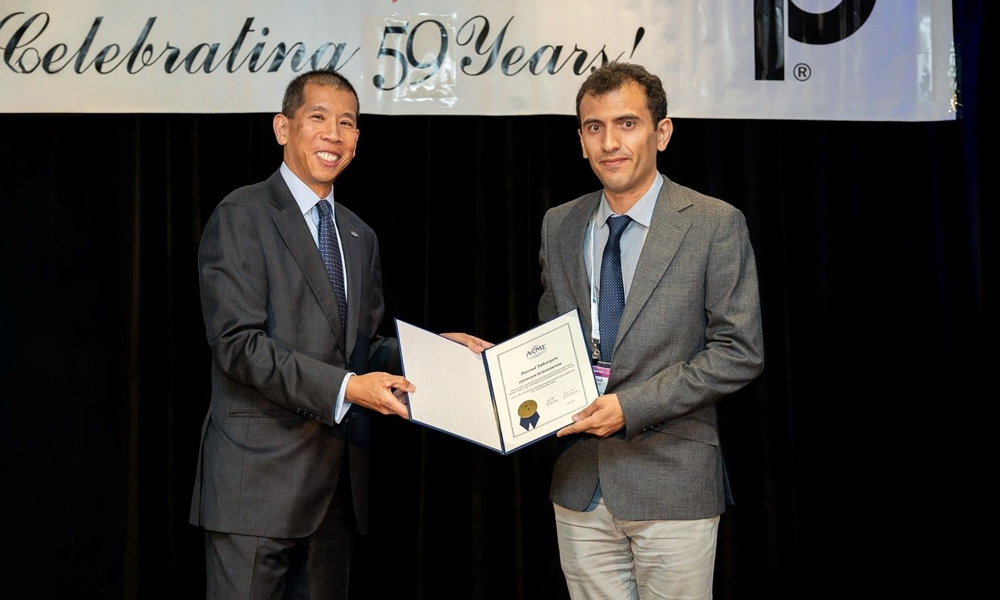Media
Contact
Communications Specialist
Faculty of Engineering
Spencer Engineering Building
Room 2072
Western University
Tel: 519-661-2111 ext. 87015
Email: engineeringcomms@uwo.ca
Masoud Taherijam places first runner-up in ASME PVP Student Paper Competition

Masoud Taherijam (r) at ASME Pressure Vessels & Piping (PVP) 2025 Conference in Montreal. (Submitted photo)
Masoud Taherijam, a third-year PhD candidate in mechanical and materials engineering at Western University, has been named first runner-up in the Rudy Scavuzzo Student Paper Competition at the ASME Pressure Vessels & Piping (PVP) 2025 Conference in Montreal.
His paper, “Effect of β-Phase on Deformation and Stress Partitioning in Zr-2.5Nb Pressure Tubes,” earned a US$1,500 paper award and an additional US$1,000 travel grant. His supervisor, professor Hamidreza Abdolvand, called the award “one of the most prestigious in our field.”
Zr-2.5Nb is the metal of choice for CANDU reactor pressure tubes because it combines a soft, flexible matrix of α-zirconium crystals with small, stronger pockets of β-zirconium. You can think of the α-phase as the ductile part that lets the tube bend without cracking, while the β-phase grains act like built-inreinforcements, improving overall strength. The β-phase is also niobium-rich, which helps resist corrosion and reduces hydrogen pickup compared to older zirconium alloys. This is especially important in heavy-water coolant, where excess hydrogen can form a brittle phase called hydride, which weakens the metal over time.
To study exactly how those β-phase pockets affect performance, Masoud developed a computer model to simulate the way the metal deforms under pressure. He ran two scenarios: one where crystalline grains were randomly arranged in every direction, and another where most grains share a common alignment, or “texture.” This let him see how crystal orientation changes the way stress moves through the material.
What he found is that the stiffer β-phase grains end up carrying a much larger share of the load as the tube is squeezed and bent. In textured samples some regions take on surprisingly high stresses while others stay relatively relaxed. When the pressure is released, those same β-phase pockets remain locked with elevated internal stresses. That matters because in nuclear environmentshydrogen atoms tend to move into high-stress zones, and if too much hydrogen builds up there, it can lead to cracking over time.
By pinpointing exactly where stress concentrates, engineers can now tailor heat-treatments or tweak the alloy composition to spread forces more evenly. This insight makes it easier to predict and reduce hydrogen-related damage and to design pressure tubes that stay safe and reliable for decades in service.
Taherijam’s success follows strong showings at other venues. In 2024, he won a C$500 award and third place for his poster at the CANDU Fuel Channel Seminar organized by the CANDU Owners Group (Conexus). He was one of three academic researchers invited to present to more than 400 industry and research attendees.
To date, Taherijam has published two lead-author papers in the International Journal of Plasticity and Acta Materialia. His ongoing work aims to refine the design and safety margins of pressure-tube components in Canada’s CANDU reactors.

